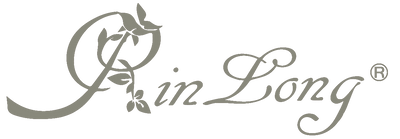Breaking Tradition: How Blue Flowers Are Redefining Wedding Aesthetics
In recent years, the landscape of wedding aesthetics has witnessed a transformative shift, moving away from conventional norms and embracing a more personalized approach. Central to this evolution is the rising popularity of blue flowers, a trend that is redefining what a wedding can look like. Far from being a mere choice of color, the incorporation of blue in wedding decor symbolizes a move towards modernity, uniqueness, and a break from the monochromatic traditions of the past.
This trend is not just about the visual appeal; it's a deeper reflection of how couples today are seeking to infuse their weddings with personal meaning and distinctive flair. Blue, a color traditionally associated with serenity, depth, and stability, is now being celebrated for its versatility and the unique touch it brings to wedding ceremonies and receptions. From the soft pastels of baby blue to the rich, deep hues of navy or sapphire, blue offers a spectrum of possibilities, each shade setting a different mood and atmosphere for the occasion.
Moreover, the choice of blue is increasingly seen as a statement of sustainability and eco-consciousness. As more couples become aware of the environmental impact of their big day, blue flowers, particularly when combined with artificial alternatives, present an opportunity to reduce the ecological footprint. Artificial flowers, once considered a less desirable option, have undergone a renaissance. Today's high-quality faux florals are not only visually stunning but also offer a pragmatic and eco-friendly alternative to their fresh counterparts. They eliminate the need for out-of-season blooms, reduce waste, and can be repurposed or kept as keepsakes, further extending their lifecycle and reducing their environmental impact.

The integration of blue wedding flowers and artificial flowers is thus not just an aesthetic choice but a reflection of contemporary values. It's about creating a wedding experience that is not only visually breathtaking but also resonates with the couple's ethos and beliefs. This trend is a celebration of individuality, a nod to sustainability, and a testament to the evolving nature of wedding traditions in the modern era.
The choice of blue in wedding decor represents a break from tradition, offering a fresh and contemporary look. Blue, a color symbolizing trust, loyalty, and wisdom, adds a layer of depth and sophistication to wedding aesthetics. This trend is not just about the color but also about embracing individuality and making a personal statement.
Why Blue Wedding Flowers Are Captivating Couples
1. Uniqueness:
Blue flowers in weddings stand out as a symbol of uniqueness. Unlike the more traditional choices of whites and pinks, blue offers a distinctive allure. This rarity is particularly appealing to couples who wish to express their individuality through their wedding theme. Blue flowers, ranging from the ethereal shades of sky blue to the deep, mesmerizing tones of navy, provide a canvas for creativity and personal expression. They allow couples to make a statement, showcasing their unique style and setting their celebration apart from more conventional weddings.
Expanded Tip: To enhance the uniqueness of your wedding, consider using rare blue flowers like Himalayan blue poppies or blue hibiscus, which can add an exotic and exclusive touch to your floral arrangements.
2. Versatility:
The versatility of blue flowers is another reason for their growing popularity in weddings. They can seamlessly integrate with a variety of wedding themes and styles, from a rustic, outdoor, country vibe to an elegant, sophisticated, urban setting. Blue flowers can be paired with a wide range of colors, from soft pastels for a gentle, romantic look to vibrant hues for a more dynamic and lively palette. This adaptability makes blue an excellent choice for weddings in any season, matching the natural surroundings whether it's the fresh bloom of spring or the crisp air of a winter wedding.
Expanded Tip: Work with your florist to choose blue flowers that complement your wedding season and theme. For instance, lighter shades of blue like periwinkle or cornflower are perfect for spring and summer, while deeper shades like indigo or midnight blue suit fall and winter weddings.
3. Symbolism:
The symbolism of blue flowers is deeply rooted in cultural and historical contexts, resonating with couples on a more profound level. Blue is often associated with trust, loyalty, and stability, qualities that are highly valued in a marriage. Incorporating blue flowers into a wedding can be seen as a reflection of the couple's commitment and deep emotional bond. Additionally, blue is also a color of calmness and serenity, offering a tranquil backdrop to the festivities of the day. This symbolic significance adds depth to the aesthetic appeal of blue flowers, making them a meaningful choice for couples.
Expanded Tip: Consider including blue flowers that have specific meanings in your bouquet or decor. For example, blue roses symbolize mystery and the impossible, while blue violets represent faithfulness and devotion.

The Advantages of Artificial Flowers in Weddings
1. Longevity and Durability:
One of the most significant advantages of artificial flowers is their longevity. Unlike real flowers, which can wilt and fade within a day, artificial flowers maintain their beauty and vibrancy for years. This durability makes them an excellent choice for wedding decorations, especially in settings where real flowers might not withstand the environment, such as outdoor summer weddings or cold winter events. Additionally, artificial flowers can be prepared well in advance of the wedding day, reducing last-minute stress and ensuring that every floral detail is perfect.
Expanded Tip: Consider using artificial flowers for intricate pieces like floral arches or hanging installations, where their durability will ensure they look fresh throughout the event and in photographs.
2. Allergy-Friendly:
Artificial flowers present a practical solution for weddings where guests or family members may have allergies to pollen. They ensure that everyone can enjoy the celebration without the worry of allergic reactions, which can be particularly important during ceremonies and indoor receptions where guests are in close proximity to the floral arrangements.
Expanded Tip: For guests with severe allergies, communicate with your wedding planner or decorator to ensure that all floral arrangements, including centerpieces and bouquets, are made with high-quality artificial flowers.
3. Cost-Effectiveness:
While the initial cost of high-quality artificial flowers might be comparable to fresh flowers, they offer cost-effectiveness in the long run. Artificial flowers can be reused or repurposed for other events, or even as home decor after the wedding, providing value beyond the wedding day. Additionally, they allow access to flower types that may be out of season or prohibitively expensive if sourced fresh.
Expanded Tip: After the wedding, consider donating your artificial flowers to places like hospitals, nursing homes, or community centers, where they can continue to bring joy and beauty.
4. Versatility and Consistency:
Artificial flowers offer unparalleled versatility and consistency. They are not subject to the whims of seasons or weather conditions, ensuring that your chosen flowers are available in the exact color and style you want, regardless of the time of year. This consistency is crucial for maintaining a cohesive look throughout the wedding venue, from the bouquets to the table centerpieces.
Expanded Tip: Use artificial flowers to achieve styles or themes that might be difficult with real flowers, such as exotic or fantasy-themed weddings, where specific colors or types of flowers are essential to the theme.
5. Eco-Friendly Options:
With growing environmental concerns, many couples are seeking eco-friendly wedding options. Modern artificial flowers can be made from sustainable materials, offering an environmentally friendly alternative to cut flowers, which often involve extensive carbon footprints due to growing, refrigeration, and transportation requirements.
Expanded Tip: Look for artificial flowers made from recycled materials or sustainable sources. After the wedding, these flowers can be recycled or repurposed, aligning with eco-conscious wedding practices.
Incorporating Blue Flowers into Your Wedding
1. Bridal Bouquets:
A bridal bouquet featuring blue flowers can be a stunning and unique element of your wedding. Blue flowers like delphiniums, hydrangeas, or cornflowers can create a striking contrast against a white wedding dress, offering a splash of color that is both elegant and memorable. You can choose a bouquet that is entirely made of blue flowers for a bold statement, or mix them with other colors like whites and greens for a more subdued, yet sophisticated look.
Expanded Tip: Consider the shade of blue that complements your wedding theme and dress. For a softer, romantic look, opt for pastel blues; for a more dramatic effect, choose deeper shades like navy or royal blue.
2. Centerpieces and Decor:
Blue flowers can transform your reception venue with their vibrant hues. Use them in centerpieces, combining them with other colors or keeping a monochromatic blue theme for a cohesive look. Blue flowers can also be used in other decor elements, such as garlands for the head table, arrangements for the guest book table, or even as part of the backdrop for photos.
Expanded Tip: For centerpieces, consider the height and size of arrangements. Tall, dramatic arrangements can add a sense of luxury, while smaller, more intimate arrangements create a cozy atmosphere.


3. Wedding Attire:
Incorporate blue flowers into the wedding party's attire for a unified look. Blue flower boutonnieres for the groom and groomsmen, corsages for the mothers of the bride and groom, or even blue flower hair accessories for the bridesmaids can tie the theme together beautifully.
Expanded Tip: Match the shade of blue in the flowers with other elements of the attire, such as ties, pocket squares, or dresses, to create a harmonious and coordinated appearance.
4. Venue Ambiance:
Utilize both natural and artificial blue flowers to adorn the ceremony and reception venues. They can be used in aisle decorations, altar arrangements, and even on the chairs or pews. For an evening reception, consider pairing blue flowers with soft lighting to create a magical and romantic atmosphere.
Expanded Tip: Use different shades and types of blue flowers to add depth and interest. Lighter blues can create a sense of airiness and space, while darker blues can add richness and intimacy.
5. Cake Decoration:
Blue flowers can also be an exquisite addition to your wedding cake. Whether you opt for delicate sugar flowers or use real or artificial ones, they can turn a simple cake into a stunning centerpiece that echoes your floral theme.
Expanded Tip: Coordinate with your baker to ensure the style of the cake complements the flowers. For a rustic wedding, a naked cake adorned with blue flowers can be charming, while a more formal wedding might call for a classic white cake with elegant blue floral accents.
Combining Blue and Artificial Flowers
Merging blue and artificial flowers can result in breathtaking decor. This combination allows for creativity and innovation, ensuring that the floral arrangements reflect personal style while being practical and sustainable.
The trend of blue and artificial flowers in weddings is more than a style choice; it's a statement of individuality and modernity. By embracing this trend, couples can create a wedding experience that is not only visually stunning but also deeply personal and memorable. As you plan your special day, consider the charm and versatility of blue flowers to make a bold and beautiful statement.




Leave a comment